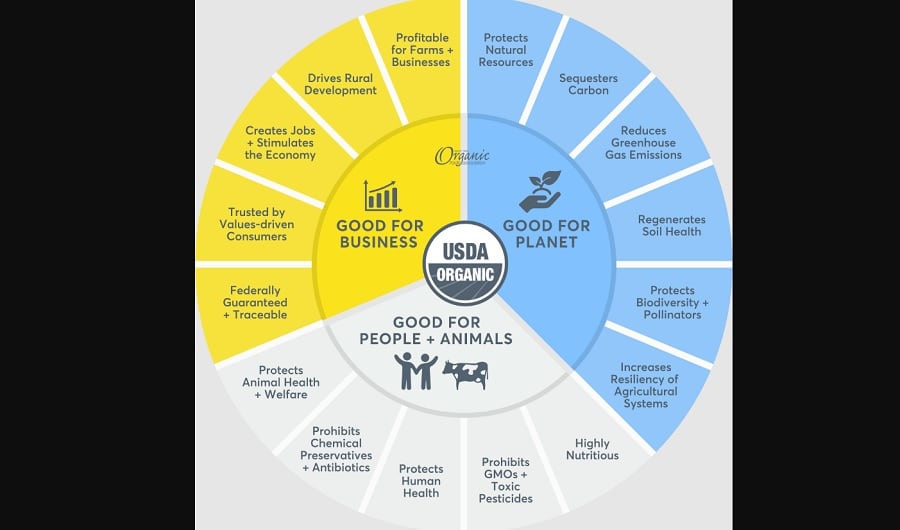As part of the USDA’s Organic Market Development Grant program, the department awarded on May 15 approximately $24.8m for 23 grant projects to develop organic markets and encourage consumption of domestic organic agricultural products. Among the recipients are the OTA and The Organic Center, which matched the funds for a total of $4.4m, to launch a three-year project to drive organic consumption by increasing consumer awareness about the full benefits of organic and correcting misinformation.
The grant and project respond to multiple consumer surveys that found many Americans do not fully understand what organic certification entails or the potential health benefits it offers people and the planet.
“In April, OTA released a report on consumer perception of organic, the value of organic, their willingness to pay for organic, their understanding of organic attributes, and also compared organic to other labels. … We were thrilled … that organic had great familiarity with consumers. Ninety percent were familiar [with organic]. Seventy percent of consumers trusted it,” OTA Co-CEO Matthew Dillon told FoodNavigator-USA. “But we saw a disconnect that many consumers did not understand some of the attributes of organic. They did not understand that organic meant grown without antibiotics or grown without growth hormones. They did not understand that it meant free of genetically engineered seed and crops. They did not understand the decrease in pesticide exposure that comes with organics. They certainly did not understand organic’s potential to benefit natural resources – biodiversity, soil and water.”
Knowing that consumers care about those benefits but did not associate them with organic revealed an opportunity to help consumers “realize that organic is in that sweet spot of environmental benefits that they are looking for when they are shopping for food,” he added.
Campaign could lower organic players’ long-term marketing, certification costs
Closing the knowledge gap about what organic represents could help boost sales of organic but also reduce marketing costs for organic certified products, many of which pay for multiple certifications – such as Non-GMO Project Verified – that are encompassed by organic but not as well known by consumers.
“If we can bridge this gap so there is an understanding that organic [covers many of the single attribute claims consumers seek], it will be much easier for brands to be telling the story and much less of a need to be having a million different labels on your packing, which in my opinion only leads to greater consumer confusion,” said Violet Batcha, senior director of marketing and communications at OTA.
She explained the three-year project partially funded by the $2.2m grant from USDA will help close this gap and generate additional demand for a growing organic market by developing an integrated marketing campaign targeting “consumers who do not know about organic yet, are not organic bread and butter shoppers, and explain to them the regulatory as well as the science backed benefits of organic and why it is meaningful to be purchasing organic products.”
Campaign will be rooted in science-based storytelling
The campaign will be rooted in science gathered during the first year of the program in part by The Organic Center, which Batcha said convenes research about organic through partnerships with universities, research institutes and it own testing.
In the second year, the project will use the most influential science to create a paid advertising campaign that will include digital and traditional advertising nationwide with particular emphasis on organic “cold spots,” where organic is not frequently purchased currently, said Batcha.
“At the end of the second year, which will be the first year of the full promotional campaign, we will do an analysis of what worked and what did not work and we will make some adjustments. And then at the end of the three years, we are putting together a report for the industry on best practices – what worked for the communications and what did not work. So that way, the entire industry can use our findings and insights from this project for much longer term,” she added.



